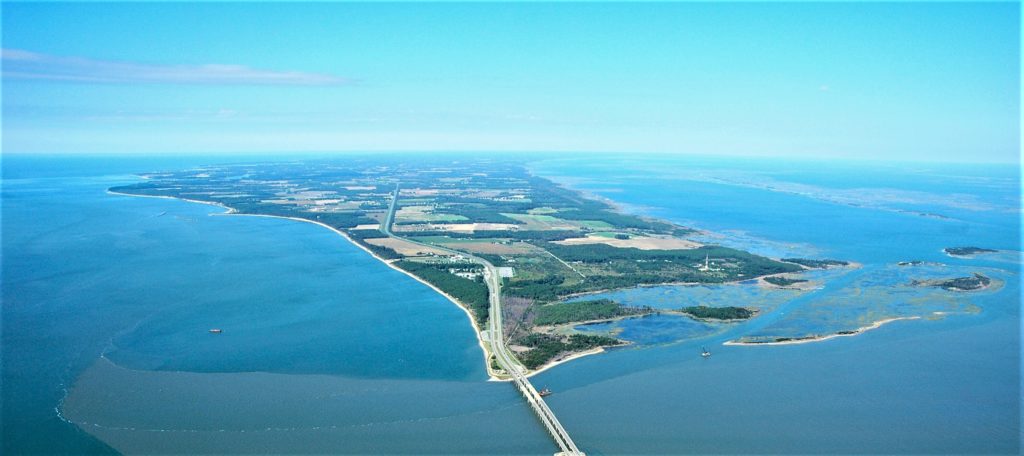About Virginia's Eastern Shore

Virginia’s Eastern Shore, discovered in 1603 by Captain John Smith, made famous by Pocahontas, and settled by the Virginia Company of London, is virtually brimming with history, but few other areas in the U. S. have sustained the depth of history the “Shore” still encompasses. This can be credited solely to that factor that sets our area apart from all other early French and English settlements: the majestic Chesapeake Bay. Nothing has influenced the Shore historically more than this great body of water, and nothing influences us more in our contemporary society.
The Chesapeake Bay is the world’s largest bay. Historically, the Bay separated the settlers from the mainland, thereby separating them from the constant supervision of James Town and Mother England. This separation enabled Shore settlers a sort of autonomy in their daily lives and allowed them to develop a satisfying sense of self-reliance. These factors are still very much a part of Shore life today.
The Bay made the Shore seem like the Garden of Eden to the early settler, and still today, because of the Bay the Shore enjoys a moderate yet four season climate. The same huge masses of warm air that came off the Bay and warmed the Shore pushed storms to the far sides of the Barrier Islands. The Bay made the soils a rich, sandy loam and provided endless flora and fauna to feed the settlers and the Native Americans alike. People found that they could catch huge sea dwelling fish in the safety of the Bay waters. How have these things changed through the years? They have not. We still enjoy the moderate climate, the Barrier Island protection from storms and the abundant wildlife. In fact, most of our citizens still work in agriculture or aquaculture today.
The Bay provides a sort of intangible history, one you can’t exactly put your finger on, but the Shore has tangible history too. The Northampton County Courthouse is the oldest U.S. repository of continuous court records dating back to 1632. The Accomack County Courthouse has the second oldest.
These public buildings are an exquisite example of tangible, accessible history. But we cannot even think of the Eastern Shore of Virginia without thinking of the literally hundreds of homes and farms that span the centuries. These graceful ladies have watched over the Shore long before England believed this would be a permanent settlement. The Majority of the truly historic homes on the Eastern Shore are still operational private residences and many are in the same families that first received land grants from King James or land gifts from the King of the great Accomack Indians, Debedeavon. And many are on view to the public during “Garden Week” every April. It is with pride that we say today, on the cusp of a new century, one cannot drive a 10 mile stretch of Highway 13 without passing a home or farm that was built centuries earlier and is still someone’s warm hearth today.
There are many, many books written on the early history of Virginia’s Eastern Shore and it would be folly to think that we could even provide an ample beginning to our history on one web page. We find that people are generally very surprised at how alive history really is here, especially when they come to realize that we are not at all removed from the modern world. To better inform folks about our area, we published our own book about 10 years ago. This book includes many of the photos on these pages and a substantial informational and pictorial view of the Shore as it exists today. To order our book, call 1-800-BLUE HERON.